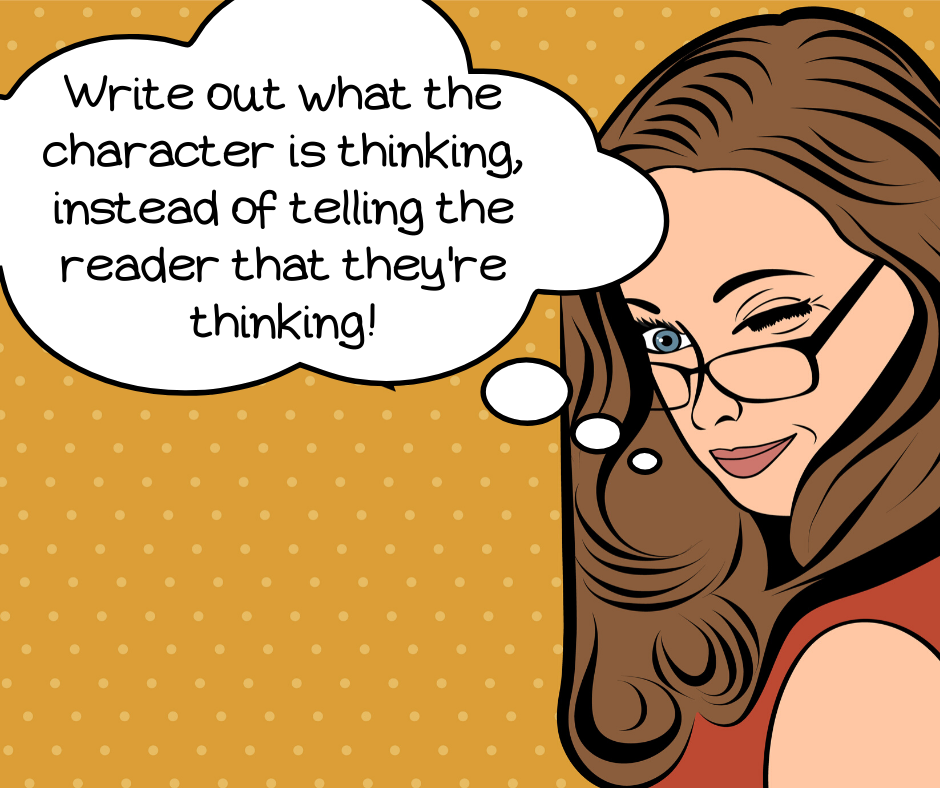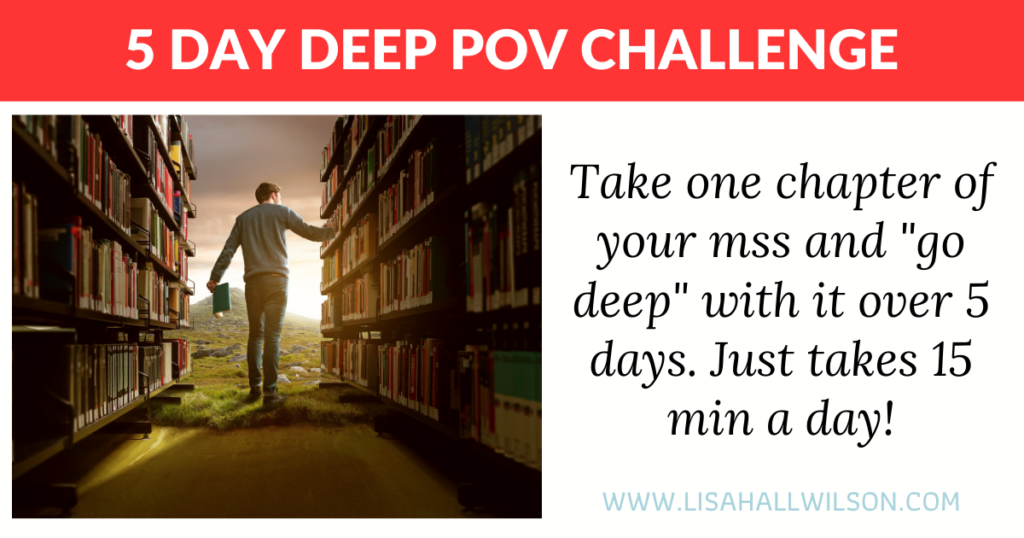
Deep point of view is a stylistic choice to remove the writer voice and instead write the story as though the reader is inside the character’s head. You want to remove any hints that the reader is in a chair at home reading a story instead of living out the story alongside the main character(s).
Learning to recognize when distance creeps into your story is really hard, especially if you haven’t read a lot of stories written entirely in deep point of view. It’s a tricky mindset shift that needs to happen and it’s not always intuitive.
Here’s a post on removing distance in deep pov that might be helpful if this is new to you.
I’m doing something a bit different here this week – an experiment of sorts. In my courses and in the free Facebook group, I often give feedback on a paragraph or two to help writers see where they can take their writing deeper and so many find that SUPER helpful.
I’ve been doing free one-page critiques in my free Facebook group and those who submit generously agreed to allow me to share a paragraph or two in the spirit of helping everyone go deeper! You can’t fix what you can’t see! And it happens to everyone. I still have editors and crit partners point out where I’ve let distance and telling creep into my stories and I’ve shared many of those examples here on the blog. It’s just so hard to see in your own work — not impossible, it gets easier, but it will still creep in.
Example One: What Is Being Mentally Prepared For And WHY?
Cindy, upstairs in her sitting room, flips the television off. She watches the limo enter through the gates. It winds around the bare flower beds, past the leafless dogwood trees, coasting to a slow stop at the front of the house. She smooths her wool navy and black plaid skirt down over her hips, mentally preparing for the explanation. The hem of her skirt dances around her booted ankles as she walks to the stairway. Placing one foot firmly in the center of each step, she makes her descent.
I’ve bolded where the distance as crept into the paragraph here. The goal of deep pov is for the reader to feel like they’re right there, in the room with the character privy to all their thoughts and feelings.
Gravel crunched on the driveway and Cindy flipped off the television. She stood to the side of the window and looked out, but didn’t move the lace curtains aside. The limo glided past the flower beds and coasted to a stop at the front of the house. He’d have an excuse ready. He always did. She smoothed her wool skirt over her hips and turned towards the stairs. She wouldn’t challenge his lies, but she was done believing them.
I don’t know how this writer wants this story to go, but here’s one way the distance could be removed. The reader doesn’t know what this character is mentally preparing for or WHY. Having both those elements shown (not told) would help the reader lean in and hopefully cheer for this character!
The reader, at this point, doesn’t need to know what the apology will be about, or even if her attitude is fair. It’s how this character sees the situation RIGHT NOW. Do you see a difference? Are you leaning in more to find out what happens next?

Example Two: Let The Character Live The Story Rather Than The Writer Tell A Story
After a short rest they continued toward home.
Kiri was having second thoughts about doing this again tomorrow. It wasn’t just the heat making her uncomfortable. Her cramps were getting worse. Normally fast and light on her feet, she was having trouble keeping up with Joro’s long-legged stride.
So, I’ve bolded the places where distance has crept in a bit. These are easily fixed. It’s more of a mindset shift, having the character live out the story on the page rather than the reader being told a story. Doesn’t change the story you want to tell, or even how you tell it – it changes who is telling the story is all.
What second thoughts is Kiri having? In deep pov, the reader knows everything the main character knows, but that’s ALL they know. This is fixed by writing out what her “second thoughts” are in a way that shows how she feels. The next two bolded lines feel like storytelling — the character isn’t telling the story, the writer is sharing what’s being observed and the reader is back in a theatre seat watching the story happen. Just a slight tweak puts the reader back in the action with the character.
She couldn’t make this trek again tomorrow, not in this heat. His longer stride nearly left her in the dust today and her feet would ache even worse tomorrow.
Write the story directly from the pov character’s perspective.

Example Three: The Character Shouldn’t Speak To The Reader
“I love my son. I love my son. I f–ing love my son.” I remind myself as I squint my eyes back shut for just a moment.
You see how sneaky distance is? Who is this character talking to? We want the story to come across as though the reader is on a direct IV drip from the character. Some writers intentionally break what script-writers call “the fourth wall” and talk directly to the audience, which is what this feels like, but it adds distance and is considered telling in deep pov.
“I love my son. I love my son. I f–ing love my son.” I squint my eyes back shut for just a moment.
The key for all three of these examples is to watch for when the writer voice takes over and begins telling the story. Ask – what is the character actually thinking here? Would they think that to themselves using THESE words? What’s important to this character RIGHT NOW? Edit accordingly.

Been told you should learn Deep Point Of View? Had an editor or critique partner tell you to “go deeper” with the emotions in your fiction? Looking for a community of writers seeking to create emotional connections with readers? Check out the Free Resource Hub and then join the Going Deeper With Emotions In Fiction Facebook group.
Thank you, Lisa.
Every post I read of yours makes DPOV clearer and clearer.
Awesome!! Glad to hear it!
Brilliant Lisa, I’m so glad I found your site and FB group. I’m doing your short course and its excellent.
Awesome!! Hope you find it helpful.
You do an AMAZING job illustrating the difference. Thanks for sharing your wisdom!
Glad it’s helpful!!